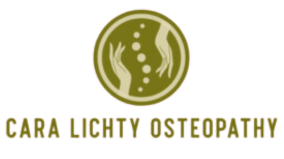Manual Osteopathy (OMT)
What Are the Principles of Osteopathy?
The principles of osteopathy are rooted in the philosophies of Dr. Andrew Taylor Still and have since evolved to fit modern medical practices. These guiding principles can be summarized into three key concepts:
The Body Is a Unit
This principle emphasizes the interconnection between the body’s structure—such as joints, muscles, and tendons—and its overall function. Osteopaths view health from a holistic perspective, considering all factors that may be contributing to symptoms. The goal is to ensure that every part of the body works in harmony to promote optimal health.The Body Is Capable of Self-Healing and Self-Regulation
The body naturally tends toward homeostasis, the state of balance needed for healing and healthy functioning—like how a cut heals or breathing regulates itself. Osteopaths focus on identifying and addressing obstacles that may be preventing the body’s natural healing processes. Factors such as repetitive movements, chronic stress, poor nutrition, and inadequate sleep can all hinder this ability. Through manual therapy and lifestyle adjustments, osteopaths help restore the body’s ability to self-regulate and heal.Structure and Function Are Interrelated
There is a deep connection between the structure of the body (muscles, joints, nerves) and how it functions as a whole. Both structure and function are influenced by internal and external factors, which impact their relationship and, ultimately, the body’s capacity for healing, resilience, and adaptation. Osteopaths use this relationship to facilitate healing and support recovery from injury or illness.

Benefits of Osteopathy
The benefits of osteopathy extend beyond just physical relief. Many individuals experience significant reductions in pain, increased flexibility, and improved posture after treatment. This therapy can be particularly effective for those suffering from chronic conditions such as arthritis, back pain, and sports injuries. Additionally, osteopathy can enhance circulation and promote relaxation, contributing to overall mental and emotional well-being. Many practitioners also emphasize the importance of education, empowering clients with knowledge about their bodies to prevent future injuries.

This technique is designed to:

Pain Relief
Osteopathy can effectively reduces chronic pain by addressing underlying systemicl issues and improving overall function.

Enhanced Mobility
This therapy increases flexibility and range of motion, helping individuals regain lost movement and perform daily activities with ease.

Improved Posture
Osteopathy promotes better alignment of the spine, peripheral joints and their underlying structures, which can lead to enhanced posture and reduced strain on the body.

Multifaceted Approach
Osteopathy is considered a multifaceted approach because it addresses multiple aspects of health, viewing the body as a whole rather than focusing on individual symptoms or isolated areas of pain.
